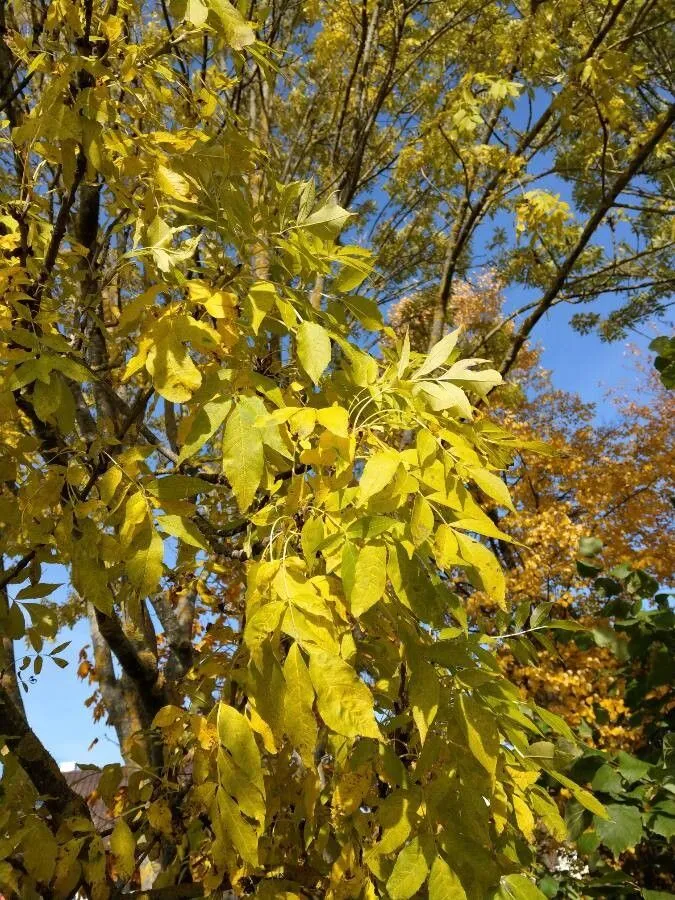
Author: Torr.
Bibliography: W.H.Emory, Not. Milit. Reconn.: 149 (1848)
Year: 1848
Status: accepted
Rank: species
Genus: Fraxinus
Vegetable: Unknown
Observations: SW. & SC. U.S.A. to Mexico
The Arizona Ash, scientifically known as Fraxinus velutina, is a deciduous tree native primarily to the Southwestern and South-Central United States, extending its range into Mexico. Recognized since 1848, this species was first described in botanical literature by the esteemed explorer and soldier W.H. Emory, documented in his “Notices of Military Reconn.” publication, with the official botanical nomenclature attributed to the botanist John Torrey.
Belonging to the Oleaceae family, the Arizona Ash thrives in a variety of landscapes, often found in riparian zones where soil moisture is more abundant. This adaptability to different environments within its native range makes it a resilient species, well-suited to withstand the semi-arid conditions characteristic of the southwestern regions it inhabits.
The Arizona Ash can reach heights of up to 50 feet, with a broad, spreading canopy that provides ample shade, making it a popular choice for landscaping in urban areas. The tree features pinnate leaves, typically composed of five to nine leaflets, which are velvety to the touch — a distinctive trait hinted at by its species name “velutina”, meaning “velvety”.
During the growing season, the Arizona Ash displays a vibrant green foliage that turns a golden yellow in the autumn, adding seasonal interest to its environment. It produces clusters of small, inconspicuous flowers in spring, which subsequently give rise to one-seeded samaras, commonly known as “ash keys”, by early summer.
Ecologically, the Arizona Ash plays a significant role in its native habitats. It provides essential cover and nesting sites for various bird species, while its leaves and seeds serve as a food source for wildlife. Moreover, the tree contributes to the stabilization of stream banks, preventing soil erosion with its extensive root system.
In summary, Fraxinus velutina, or the Arizona Ash, is a valuable and striking component of the southwestern and south-central United States and parts of Mexico’s natural and urban landscapes. Its historical recognition, ecological contributions, and aesthetic appeal underscore its significance within the plant world.
Eng: arizon ash, desert ash, velvet ash, arizona ash
Deu: arizona-esche
Spa: fresno
En: Arizon ash, Desert ash, Velvet ash, Arizona Ash
Ar: مران مخملي
Az: Məxməri göyrüş
Zh: 绒毛白蜡
Fi: Samettisaarni
De: Arizona-Esche
Pl: Jesion aksamitny
Es: Fresno
Zh-tw: 絨毛白蠟
Taken Jan 1, 1900 by EOL − Forest & Kim Starr (cc-by)
Taken Apr 2, 2014 by EOL − c michael hogan (cc-by-nc-sa)
Taken Feb 15, 2022 by López Sebastián (cc-by-sa)
Taken Jul 29, 2019 by Michael Bilbrey (cc-by-sa)
Taken Oct 25, 2020 by George Boggles (cc-by-sa)
Taken Sep 9, 2019 by that’s someguy (cc-by-sa)
Taken Jul 17, 2020 by paolo.d (cc-by-sa)
Taken Jan 1, 1900 by EOL − Forest & Kim Starr (cc-by)
Taken Aug 3, 2022 by Rodrigo Fernandez (cc-by-sa)
Taken Apr 5, 2022 by Muscariaman (cc-by-sa)
Taken Jul 29, 2019 by Michael Bilbrey (cc-by-sa)
Taken Aug 3, 2022 by Rodrigo Fernandez (cc-by-sa)
Taken Aug 5, 2020 by maria champroux (cc-by-sa)
Taken Aug 11, 2020 by Meijaard Erik (cc-by-sa)
Taken Jan 1, 1900 by EOL − Ori Fragman-Sapir (cc-by-nc-sa)
© copyright of the Board of Trustees of the Royal Botanic Gardens, Kew.
© copyright of the Board of Trustees of the Royal Botanic Gardens, Kew.
© copyright of the Board of Trustees of the Royal Botanic Gardens, Kew.
Taken Nov 23, 2015 by EOL − James Bailey (cc-by-nc)
Taken Jan 1, 1900 by EOL − Forest & Kim Starr (cc-by)
Taken Oct 10, 2014 by EOL − Allison Brody (cc-by-nc)
Taken Sep 19, 2013 by EOL − faerthen (cc-by-nc)
Taken Jan 31, 2015 by EOL − lovetodnc (cc-by-nc)
Family: Myrtaceae Author: (F.Muell.) K.D.Hill & L.A.S.Johnson Bibliography: Telopea 6: 402 (1995) Year: 1995 Status:…
Family: Rubiaceae Author: Pierre ex A.Froehner Bibliography: Notizbl. Bot. Gart. Berlin-Dahlem 1: 237 (1897) Year:…
Family: Sapindaceae Author: Koidz. Bibliography: J. Coll. Sci. Imp. Univ. Tokyo 32(1): 38 (1911) Year:…
Family: Asteraceae Author: A.Gray Bibliography: Pacif. Railr. Rep.: 107 (1857) Year: 1857 Status: accepted Rank:…
Family: Fabaceae Author: Medik. Bibliography: Vorles. Churpfälz. Phys.-Ökon. Ges. 2: 398 (1787) Year: 1787 Status:…
Family: Aspleniaceae Author: (Cav.) Alston Bibliography: Bull. Misc. Inform. Kew 1932: 309 (1932) Year: 1932…